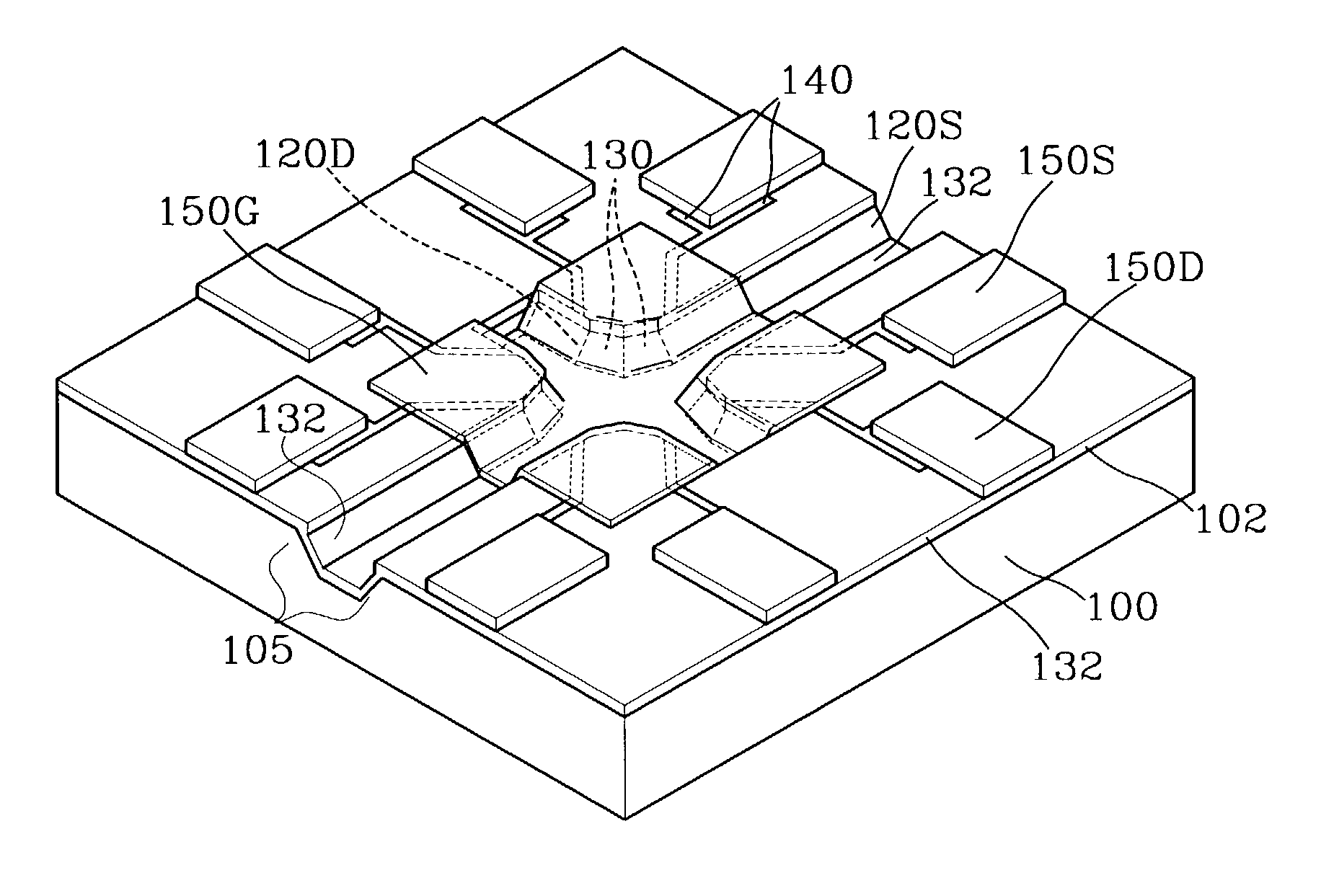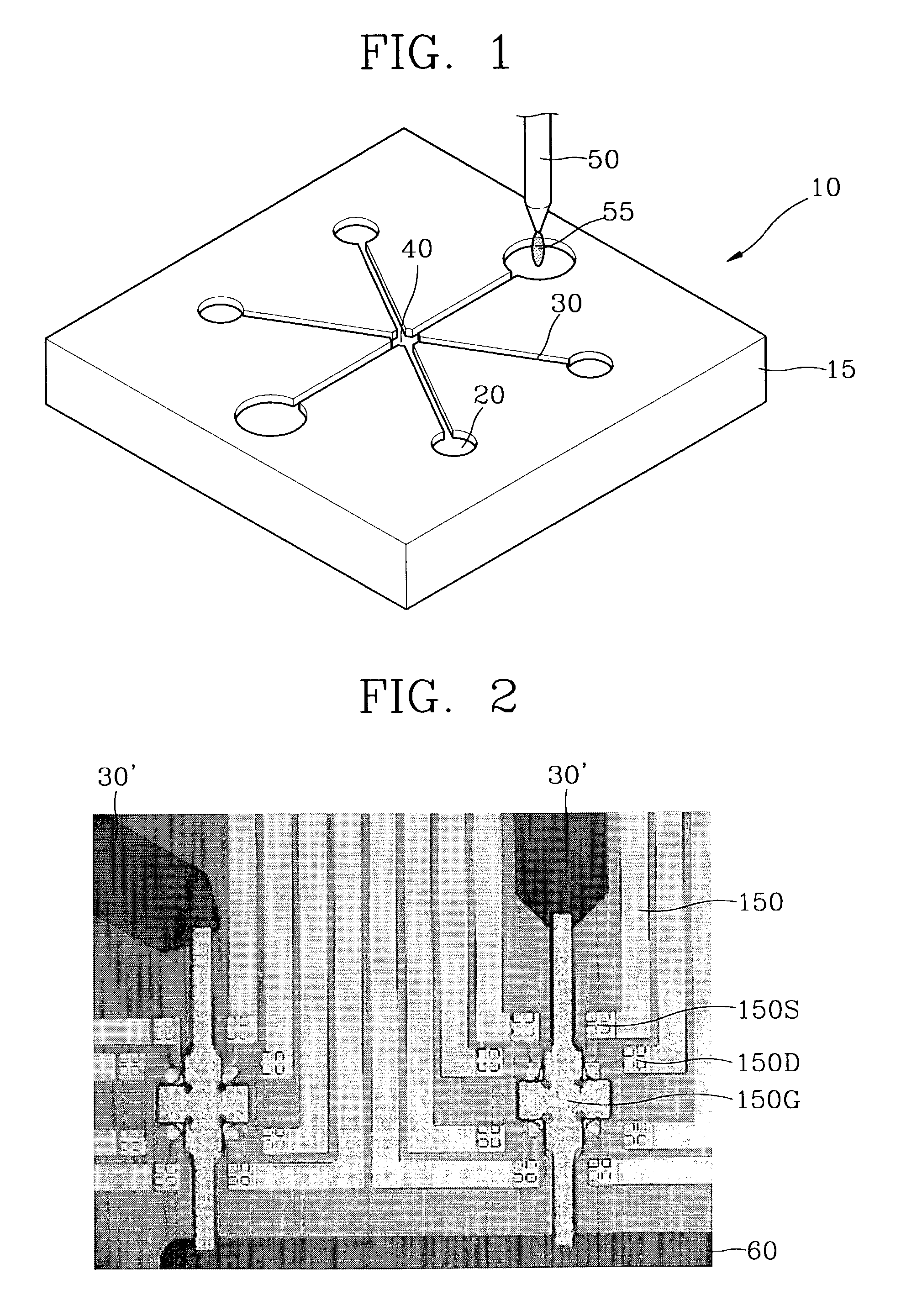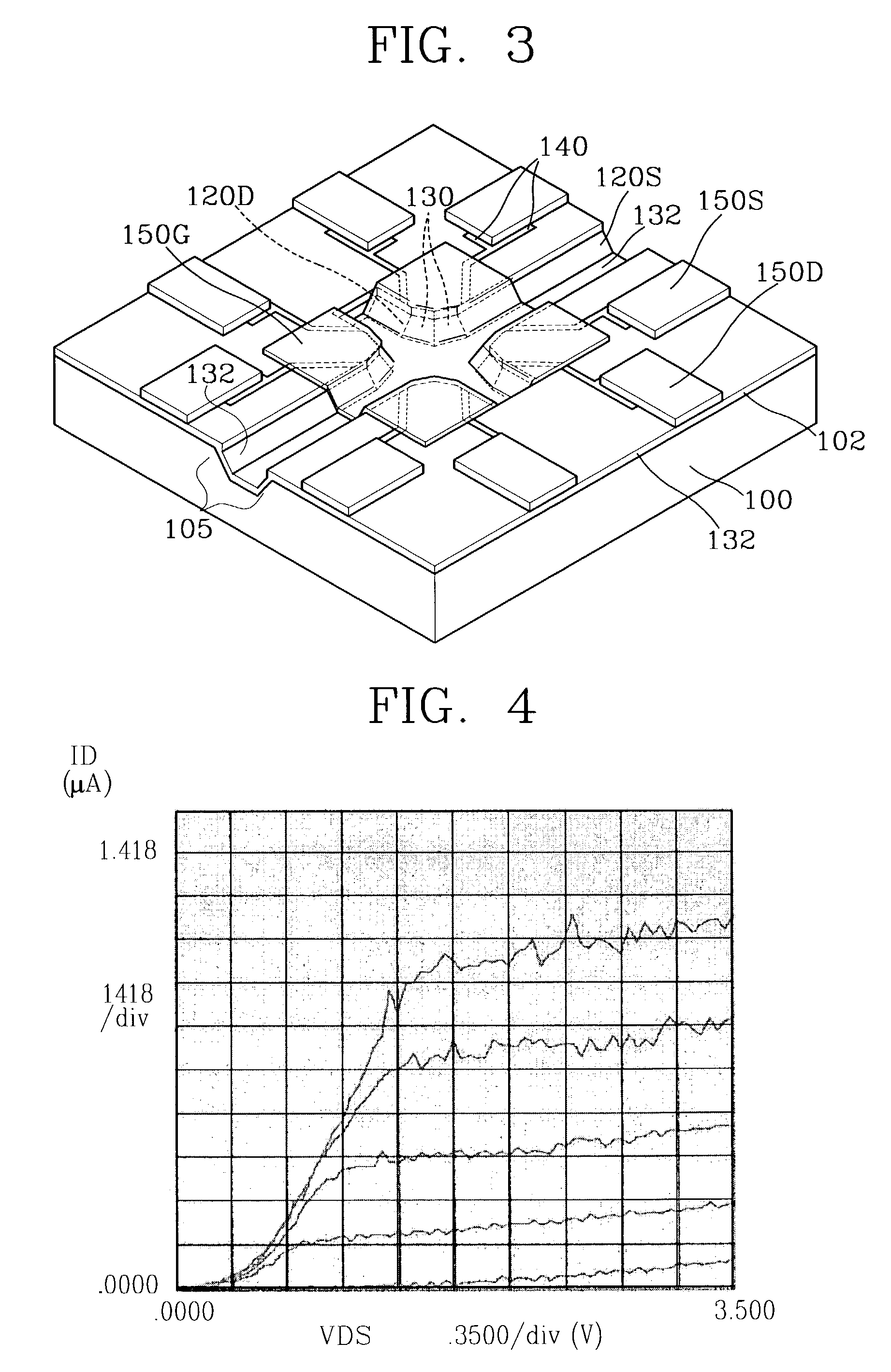Molecular detection device and chip including MOSFET
- Summary
- Abstract
- Description
- Claims
- Application Information
AI Technical Summary
Benefits of technology
Problems solved by technology
Method used
Image
Examples
embodiment 1
Fabrication of Molecular Detection Device or Nucleic Acid Mutation Assay Device
[0097]1. Formation of Micro-Fluid Channel
[0098]In general, the body of the molecular detection device or the nucleic acid mutation assay device according to the present invention can be assembled using a method and material compatible with microfabrication techniques. For example, the body of the molecular detection device or the nucleic acid mutation assay device may include a polymer-based part formed by injection molding using a variety of polymers, or a plurality of planar crystalline substrates formed of silicon, glass, etc. A variety of wells or channels may be formed in a crystalline substrate made of, for example, silica, glass or silicon, by etching, milling, drilling, etc. These materials and methods are compatible with microfabrication techniques that are widely used in semiconductor related industries. Available microfabrication techniques include, for example, electrodeposition, low-pressure ...
embodiment 2
Quantification of Probe DNA Immobilization
[0106]For quantification of the immobilization of probe DNAs, the chip of FIG. 3 was mounted on the chip mount region 40 of the molecular detection kit 10 of FIG. 1, and a voltage was applied. Synthetic DNA probes (5′-thiol-GTTCTTCTCATCATC-3′) having substituted thiol groups at 5′-terminal were loaded into the sample loading unit 20 in different volumes 20 μL, 40 μL, 80 μL, and 160 μL, respectively, and current variations over time were measured.
[0107]The results are shown in FIG. 16. As shown in FIG.16, as the quantity of probe DNAs loaded into the sensor increases, the current dropping level flowing across the drain and source of the sensor proportionally increases. As a result, the current dropping level was 14 μA for 20 μL of the probe DNA (FIG. 16A), 17 μA for 40 μL of the probe DNA (FIG. 16B), and 20 μA for 80 μL of the probe DNA (FIG. 16C). No increase in current dropping level was observed for more than 80 μL of the probe DNA (FIG. 1...
embodiment 3
Quantification of Probe DNA and Target DNA Hybridization
[0109]For quantification of the hybridization of probe DNAs to a target DNA, a voltage was applied to the lab-on-a-chip of FIG. 3, and synthetic DNA probes (5′-thiol-GTTCTTCTCATCATC-3′) having substituted thiol groups at 5′-terminal and a target DNA having a complementary sequence to the synthetic DNA probe were sequentially loaded. Then, current variations over time were measured.
[0110]The chip of FIG. 3 was mounted on the chip mount region 40 of the molecular detection kit 10 of FIG. 1, and current flowing through the chip was measured with the application of a voltage. Next, a phosphate buffer solution was injected into the sample loading unit 20 of the molecular detection kit 10. Current measurement continued as the phosphate buffer solution was injected. Immediately after the buffer injection, the current level increased, as shown by reference A of FIG. 17. Next, the current level stabilized for about 30 minutes. Then prob...
PUM
| Property | Measurement | Unit |
|---|---|---|
| Temperature | aaaaa | aaaaa |
| Melting point | aaaaa | aaaaa |
Abstract
Description
Claims
Application Information
 Login to View More
Login to View More - R&D
- Intellectual Property
- Life Sciences
- Materials
- Tech Scout
- Unparalleled Data Quality
- Higher Quality Content
- 60% Fewer Hallucinations
Browse by: Latest US Patents, China's latest patents, Technical Efficacy Thesaurus, Application Domain, Technology Topic, Popular Technical Reports.
© 2025 PatSnap. All rights reserved.Legal|Privacy policy|Modern Slavery Act Transparency Statement|Sitemap|About US| Contact US: help@patsnap.com



